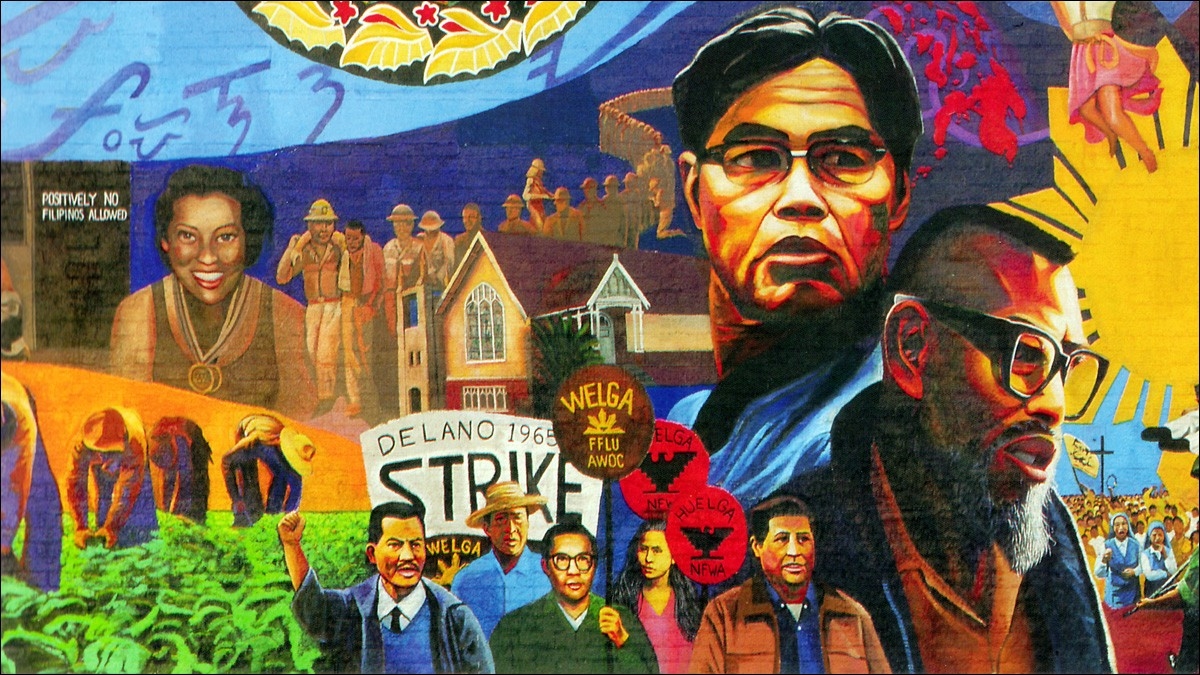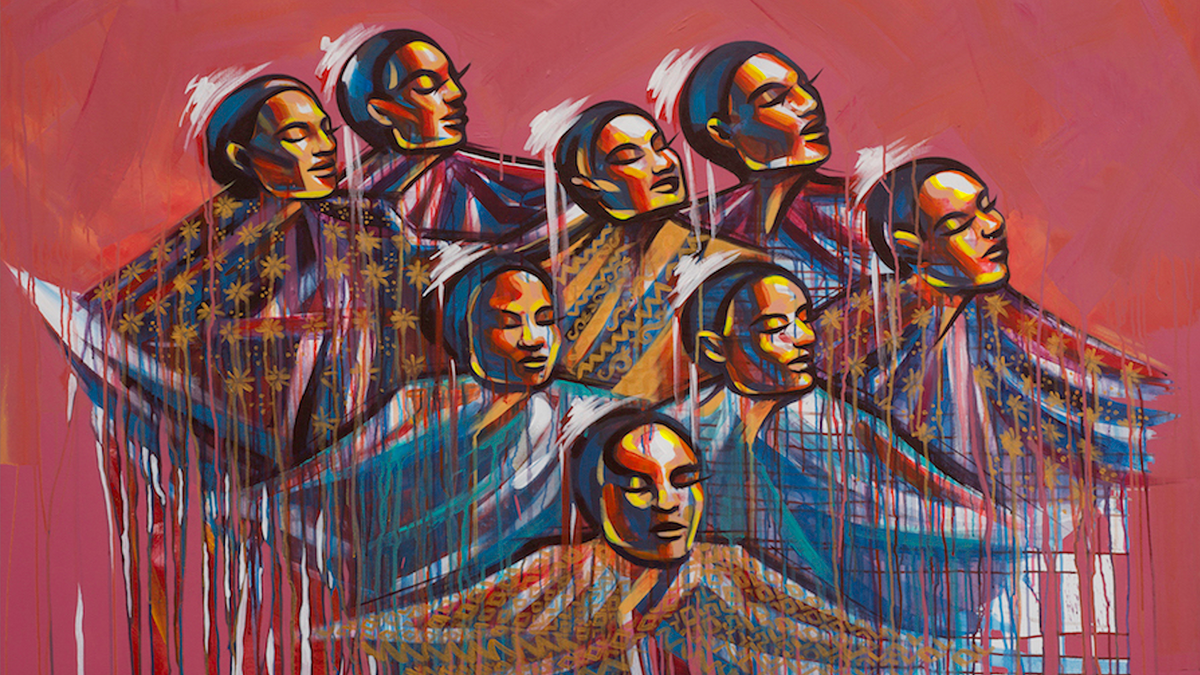FILIPINO AMERICAN HISTORY MONTH
– October –
– October –

To recognize Filipino American History Month and honor the history, pursuits, accomplishments, and legacy of the Filipino community, we have pulled together some important resources and encourage you to reflect, learn and continue taking actions that build more inclusivity in our communities and workplace.
A Filipino American Story Since 1587 by Next Day Better
UNITED STATES
Filipino Americans are the second-largest Asian American group in the nation and the third-largest ethnic group in California, after Latinas/os and African Americans.
The celebration of Filipino American History Month in October commemorates the first recorded presence of Filipinos in the continental United States, which occurred on October 18, 1587, when “Luzones Indios” came ashore from the Spanish galleon Nuestra Senora de Esperanza and landed at what is now Morro Bay, California. During this time the Philippines were part of New Spain.
In 2009, U.S. Congress recognized October as Filipino American History Month in the United States. Various states, counties, and cities in the U.S. have established proclamations and resolutions declaring observance of Filipino American History Month.
The late Dr. Fred Cordova, along with his wife, FANHS Founder Dr. Dorothy Laigo Cordova, first introduced October as Filipino American History Month in 1992 with a resolution from the FANHS National Board of Trustees. Source 1 | Source 2
CANADA
Filipino Heritage Month is observed in Canada during the month of June to recognize, celebrate, and raise awareness about the Filipino community in Canada and their valuable contributions throughout Canadian history. Starting in 2018, Toronto celebrated Filipino Heritage Month,[12] becoming Canada’s first municipality to mark June as Filipino Heritage Month in perpetuity. Alberta was the first Canadian province to do so. Source 1 | Source 2 | Source 3
Filipinos in the UFW Movement: Agustín Lira & Patricia Wells Solórzano on Larry Itliong
Larry Itliong was a leader in The Delano Grape Strike of 1965, and the labor movement for better wages and working conditions for farmers. Itliong partnered with Cesar Chavez to lead the formation of the United Farm Workers of America (UFW) union.
Carlos Villa was a groundbreaking American artist whose work broadened the horizons of 20th-century modernism. His search for personal and aesthetic meaning in his own Filipino heritage and global indigenous cultures led him to develop an original and expansive approach to art and the role of the artist.
From the South of Market district of San Francisco to the 1948 Summer Olympics in London, Draves became the first female and Asian American woman to win an Olympic gold in both the platform and springboard events.
Salonga was the first Filipina and Asian American to win Best Performance by a Leading Actress in a Musical at the Tony Awards.
Jo Koy is an American stand-up comedian and actor.
Bruno Mars is an American singer-songwriter, record producer, musician, dancer, and music video director.
Ruby Ibarra & The Balikbayans – Here (Live Session)
Call Her Ganda (2018)
An Untold Triumph: America’s Filipino Soldiers (2006)
Delano Manongs (2014)
Yellow Rose (2020)
K’na, the Dreamweaver (2014)
The Debut (2001)
Below are a few museums throughout North America that celebrate, entertain, and educate guests about Filipino American culture and history in the United States.

A mural in Los Angeles’ Filipinotown shows notable events and Filipino American leaders. (Photo from blogs.brown.edu)
The Filipino Canadian Art Museum is a virtual art gallery and history museum celebrating Filipino heritage culture and arts in Canada.
The Filipino American Museum is a platform for artists of Filipino descent and for work that captures and contextualizes the Filipino experience in America. FAM is a fluid space for the active investigation and expression of ideas at the intersection of contemporary art, culture and community.
Since 1987, FANHS has sponsored national conferences (later ratified as a biennial event) where community folks of all ages and from all walks of life gather to share and present research, network with other Filipino Americans, and honor those who have produced ground-breaking innovative work in the field of historical research and analysis.
First-Ever Museum Retrospective of Iconic Filipino American Artist and Educator Carlos Villa at Asian Art Museum, San Francisco Arts Commission
“’The Filipinos of South Bay’ exhibit tells the journey of Filipinos from the Philippines to the South Bay. It will provide Philippine history, the geography and waves of migration. It will feature stories of Filipinos in the military, education, business and government as well as themes of Philippine organizations and pageants, from faith to fiestas, and building community through dance and music,” said Anamaria Cabato, co-chair of the exhibit’s planning committee.
Learn more about just a few non-profit groups and organizations that work to celebrate and recognize the history, pursuits, accomplishments, and legacy of Filipino Americans.

“Family Tree” by Grace Bio
Little Manila Rising (LMR) serves the South Stockton community, developing equitable solutions to the effects of historical marginalization, institutionalized racism, and harmful public policy. LMR offers a wide spectrum of programs that address education, environment, redevelopment, and public health. LMR values all people’s unique and diverse experiences and wishes to see the residents of South Stockton enjoy healthy, prosperous lives.
The Philippine American Foundation for Charities (PAFC) exists to help support the Filipino American community – its individuals, families, & organizations in Washington DC, Maryland, and Virginia.
The National Federation of Filipino American Associations (NaFFAA) is a non-profit, non-partisan organization. Established in 1997, NaFFAA has been the standard bearer for promoting the welfare and well-being of the 4 million Filipinos and Filipino Americans throughout the United States. NaFFAA is the largest national affiliation of Filipino American institutions, umbrella organizations, and individuals. Its thirteen-member regions cover the continental United States, Alaska, Hawaii, and the Pacific Islands. NaFFAA’s vision is to serve as the voice of all Filipinos and Filipino Americans by uniting, engaging, and empowering diverse individuals and community organizations around three key areas: leadership development, civic engagement, and national advocacy.
SCPASA envisions a space where Pilipinx-Americans come together to build a supportive network aimed toward helping one another surpass cultural, social, and professional boundaries to engender positive change within each other’s lives.
FilAm ARTS exists as resource for Filipino-American artists and culture bearers outside the Philippines to cultivate a community who are rooted in our collective history and actively striving to represent, celebrate and express Filipino culture and our unique Filipino-American identity. FilAm ARTS is committed to serve as a cultural consultant to other organizations actively looking to further Filipino representation in the global community.

Social Responsibility, Diversity, Equity and Inclusion Initiatives, and Sustainable Operations.
